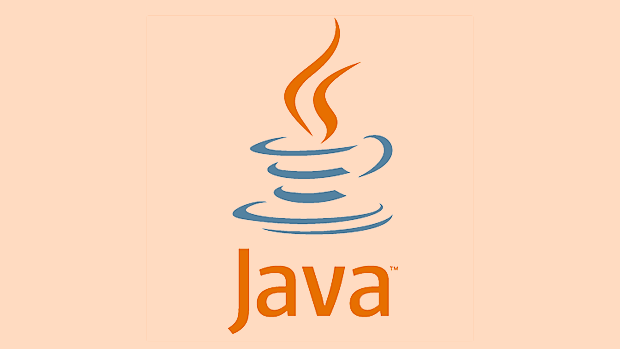How to implement the Decorator design pattern in Java?
Jul 13, 2025 am 02:29 AMHow to implement the decorator design pattern in Java? You can extend object functions by defining component interfaces, creating specific components, building basic decorators, adding specific decorators, and using decorators to combine them. 1. Define the component interface Coffee, including cost() and description() methods; 2. Create a specific component SimpleCoffee to implement basic functions; 3. Build an abstract decorator class CoffeeDecorator to implement the same interface and hold component references; 4. Add specific decorators such as MilkDecorator and SugarDecorator to add new functions based on the original behavior; 5. Use nested calls to combine decorators to achieve dynamic function extensions, such as new SugarDecorator(new MilkDecorator(new SimpleCoffee()))) at runtime.

Sure, here's how to implement the Decorator design pattern in Java in a practical and clear way.

What is the Decorator Pattern?
The Decorator pattern lets you add behavior or responsibility to objects dynamically, without affecting the behavior of other objects of the same class. It's a flexible alternative to subclassing for extending functionality.
In Java, this pattern is commonly used in I/O streams like InputStream , OutputStream , Reader , and Writer .

When Should You Use It?
You should reach for the Decorator pattern when:
- You want to add features to an object dynamically.
- Subclassing would lead to too many combinations or become unmanageable.
- You need to follow the Open/Closed Principle : open for extension, closed for modification.
This often comes up when dealing with things like formatting, logging, encryption, compression, etc.

How to Implement the Decorator Pattern in Java
Let's walk through a simple example using coffee and toppings (like milk, sugar) to demonstrate how decorators work.
1. Define the Component Interface
Start by defining the base interface that both the concrete component and decorators will implement.
public interface Coffee {
double cost();
String description();
}2. Create the Concrete Component
This is the basic object you'll be decorating.
public class SimpleCoffee implements Coffee {
public double cost() {
return 2.0;
}
public String description() {
return "Simple Coffee";
}
}3. Create the Base Decorator Class
This abstract class holds a reference to the component and implements the same interface.
public abstract class CoffeeDecorator implements Coffee {
protected Coffee decoratedCoffee;
public CoffeeDecorator(Coffee coffee) {
this.decoratedCoffee = coffee;
}
public double cost() {
return decoratedCoffee.cost();
}
public String description() {
return decoratedCoffee.description();
}
}4. Add Concrete Decorators
Each decorator adds its own behavior on top of the existing one.
For example, a milk decorator:
public class MilkDecorator extends CoffeeDecorator {
public MilkDecorator(Coffee coffee) {
super(coffee);
}
public double cost() {
return super.cost() 0.5;
}
public String description() {
return super.description() ", Milk";
}
}And a sugar decorator:
public class SugarDecorator extends CoffeeDecorator {
public SugarDecorator(Coffee coffee) {
super(coffee);
}
public double cost() {
return super.cost() 0.2;
}
public String description() {
return super.description() ", Sugar";
}
}5. Use the Decorators
Now you can combine decorators as needed at runtime:
public class Main {
public static void main(String[] args) {
Coffee coffee = new SimpleCoffee();
System.out.println(coffee.cost()); // Output: 2.0
System.out.println(coffee.description()); // Output: Simple Coffee
Coffee milkCoffee = new MilkDecorator(new SimpleCoffee());
System.out.println(milkCoffee.cost()); // Output: 2.5
System.out.println(milkCoffee.description()); // Output: Simple Coffee, Milk
Coffee milkAndSugarCoffee = new SugarDecorator(new MilkDecorator(new SimpleCoffee()));
System.out.println(milkAndSugarCoffee.cost()); // Output: 2.7
System.out.println(milkAndSugarCoffee.description()); // Output: Simple Coffee, Milk, Sugar
}
}Key Points to Remember
- Each decorator wraps another instance of the same interface.
- The client code doesn't need to know whether it's dealing with a base component or a decorated one.
- Keep each decorator focused on a single responsibility.
- Avoid deep nesting of decorators — it can get hard to read and debug.
If you're working with streams in Java, think about how BufferedInputStream wraps any InputStream to add buffering. That's the exact same idea!
Wrap-Up
Implementing the Decorator pattern in Java isn't complicated once you understand the structure. You define a common interface, create a base implementation, then build reusable wrappers that enhance behavior without modifying existing classes. It's clean, scalable, and fits well into systems where flexibility matters.
That's basically it.
The above is the detailed content of How to implement the Decorator design pattern in Java?. For more information, please follow other related articles on the PHP Chinese website!

Hot AI Tools

Undress AI Tool
Undress images for free

Undresser.AI Undress
AI-powered app for creating realistic nude photos

AI Clothes Remover
Online AI tool for removing clothes from photos.

Clothoff.io
AI clothes remover

Video Face Swap
Swap faces in any video effortlessly with our completely free AI face swap tool!

Hot Article

Hot Tools

Notepad++7.3.1
Easy-to-use and free code editor

SublimeText3 Chinese version
Chinese version, very easy to use

Zend Studio 13.0.1
Powerful PHP integrated development environment

Dreamweaver CS6
Visual web development tools

SublimeText3 Mac version
God-level code editing software (SublimeText3)

Hot Topics
 Asynchronous Programming Techniques in Modern Java
Jul 07, 2025 am 02:24 AM
Asynchronous Programming Techniques in Modern Java
Jul 07, 2025 am 02:24 AM
Java supports asynchronous programming including the use of CompletableFuture, responsive streams (such as ProjectReactor), and virtual threads in Java19. 1.CompletableFuture improves code readability and maintenance through chain calls, and supports task orchestration and exception handling; 2. ProjectReactor provides Mono and Flux types to implement responsive programming, with backpressure mechanism and rich operators; 3. Virtual threads reduce concurrency costs, are suitable for I/O-intensive tasks, and are lighter and easier to expand than traditional platform threads. Each method has applicable scenarios, and appropriate tools should be selected according to your needs and mixed models should be avoided to maintain simplicity
 Understanding Java NIO and Its Advantages
Jul 08, 2025 am 02:55 AM
Understanding Java NIO and Its Advantages
Jul 08, 2025 am 02:55 AM
JavaNIO is a new IOAPI introduced by Java 1.4. 1) is aimed at buffers and channels, 2) contains Buffer, Channel and Selector core components, 3) supports non-blocking mode, and 4) handles concurrent connections more efficiently than traditional IO. Its advantages are reflected in: 1) Non-blocking IO reduces thread overhead, 2) Buffer improves data transmission efficiency, 3) Selector realizes multiplexing, and 4) Memory mapping speeds up file reading and writing. Note when using: 1) The flip/clear operation of the Buffer is easy to be confused, 2) Incomplete data needs to be processed manually without blocking, 3) Selector registration must be canceled in time, 4) NIO is not suitable for all scenarios.
 Best Practices for Using Enums in Java
Jul 07, 2025 am 02:35 AM
Best Practices for Using Enums in Java
Jul 07, 2025 am 02:35 AM
In Java, enums are suitable for representing fixed constant sets. Best practices include: 1. Use enum to represent fixed state or options to improve type safety and readability; 2. Add properties and methods to enums to enhance flexibility, such as defining fields, constructors, helper methods, etc.; 3. Use EnumMap and EnumSet to improve performance and type safety because they are more efficient based on arrays; 4. Avoid abuse of enums, such as dynamic values, frequent changes or complex logic scenarios, which should be replaced by other methods. Correct use of enum can improve code quality and reduce errors, but you need to pay attention to its applicable boundaries.
 What is an anonymous inner class?
Jul 07, 2025 am 02:18 AM
What is an anonymous inner class?
Jul 07, 2025 am 02:18 AM
Anonymous internal classes are used in Java to create subclasses or implement interfaces on the fly, and are often used to override methods to achieve specific purposes, such as event handling in GUI applications. Its syntax form is a new interface or class that directly defines the class body, and requires that the accessed local variables must be final or equivalent immutable. Although they are convenient, they should not be overused. Especially when the logic is complex, they can be replaced by Java8's Lambda expressions.
 What is a Singleton design pattern in Java?
Jul 09, 2025 am 01:32 AM
What is a Singleton design pattern in Java?
Jul 09, 2025 am 01:32 AM
Singleton design pattern in Java ensures that a class has only one instance and provides a global access point through private constructors and static methods, which is suitable for controlling access to shared resources. Implementation methods include: 1. Lazy loading, that is, the instance is created only when the first request is requested, which is suitable for situations where resource consumption is high and not necessarily required; 2. Thread-safe processing, ensuring that only one instance is created in a multi-threaded environment through synchronization methods or double check locking, and reducing performance impact; 3. Hungry loading, which directly initializes the instance during class loading, is suitable for lightweight objects or scenarios that can be initialized in advance; 4. Enumeration implementation, using Java enumeration to naturally support serialization, thread safety and prevent reflective attacks, is a recommended concise and reliable method. Different implementation methods can be selected according to specific needs
 Java String vs StringBuilder vs StringBuffer
Jul 09, 2025 am 01:02 AM
Java String vs StringBuilder vs StringBuffer
Jul 09, 2025 am 01:02 AM
String is immutable, StringBuilder is mutable and non-thread-safe, StringBuffer is mutable and thread-safe. 1. Once the content of String is created cannot be modified, it is suitable for a small amount of splicing; 2. StringBuilder is suitable for frequent splicing of single threads, and has high performance; 3. StringBuffer is suitable for multi-threaded shared scenarios, but has a slightly lower performance; 4. Reasonably set the initial capacity and avoid using String splicing in loops can improve performance.
 mysql coalesce function
Jul 09, 2025 am 01:09 AM
mysql coalesce function
Jul 09, 2025 am 01:09 AM
The COALESCE function is used to return the first non-null value in the parameter list and is suitable for processing NULL data. 1. The basic usage is to replace the NULL value, such as replacing the empty field with the default contact method; 2. It can be used to set the default value in aggregate query to ensure that 0 is returned instead of NULL when there is no data; 3. It can be used in conjunction with other functions such as NULLIF and IFNULL to enhance data cleaning and logical judgment capabilities.
 How Annotation Processing Works in Java
Jul 08, 2025 am 02:50 AM
How Annotation Processing Works in Java
Jul 08, 2025 am 02:50 AM
Annotation processor is an extended mechanism in the Java compilation stage, used to scan and process annotations in the source code, and can generate new code or preprocess it. Its core functions include: 1. When defining annotations, it needs to specify the retention policy and target element type; 2. Implement the AbstractProcessor class and rewrite key methods such as getSupportedAnnotationTypes, getSupportedSourceVersion and process; 3. Register the processor to declare a fully qualified name through a configuration file in the META-INF/services directory. Annotation processors are widely used in frameworks such as Dagger, ButterKnife and Roo






